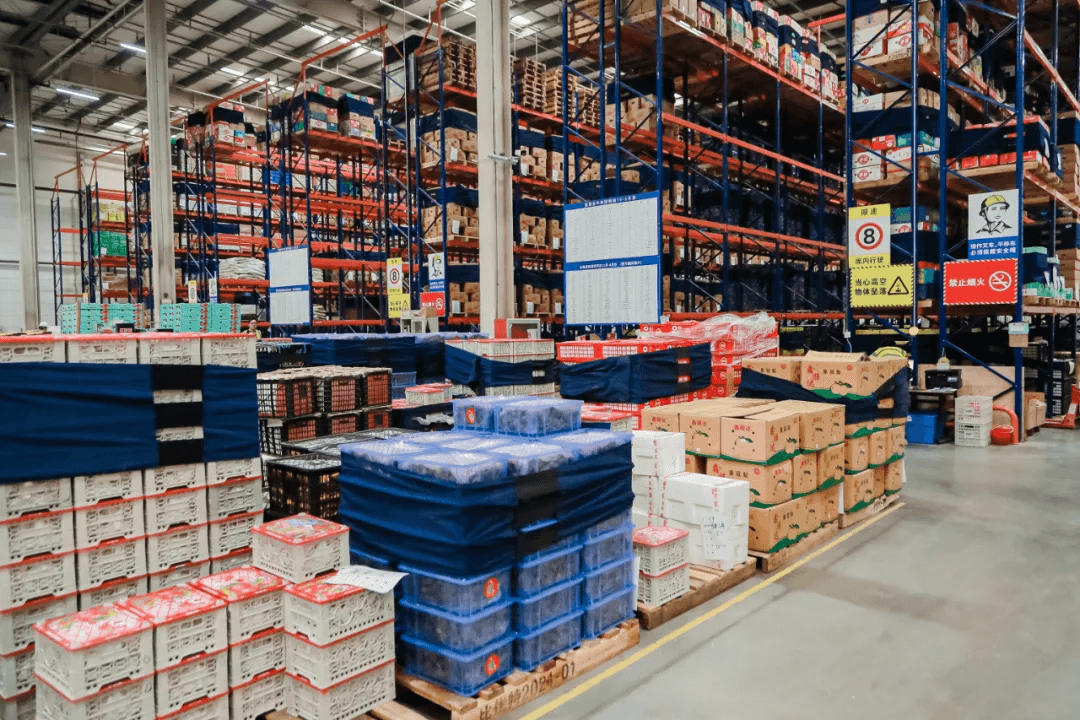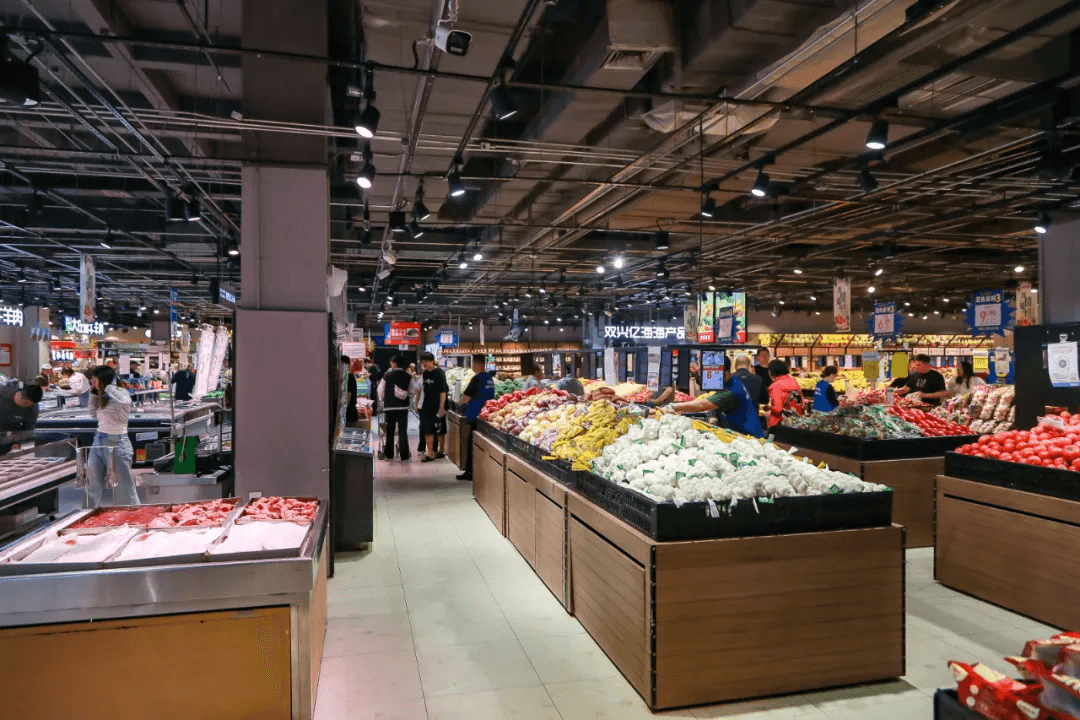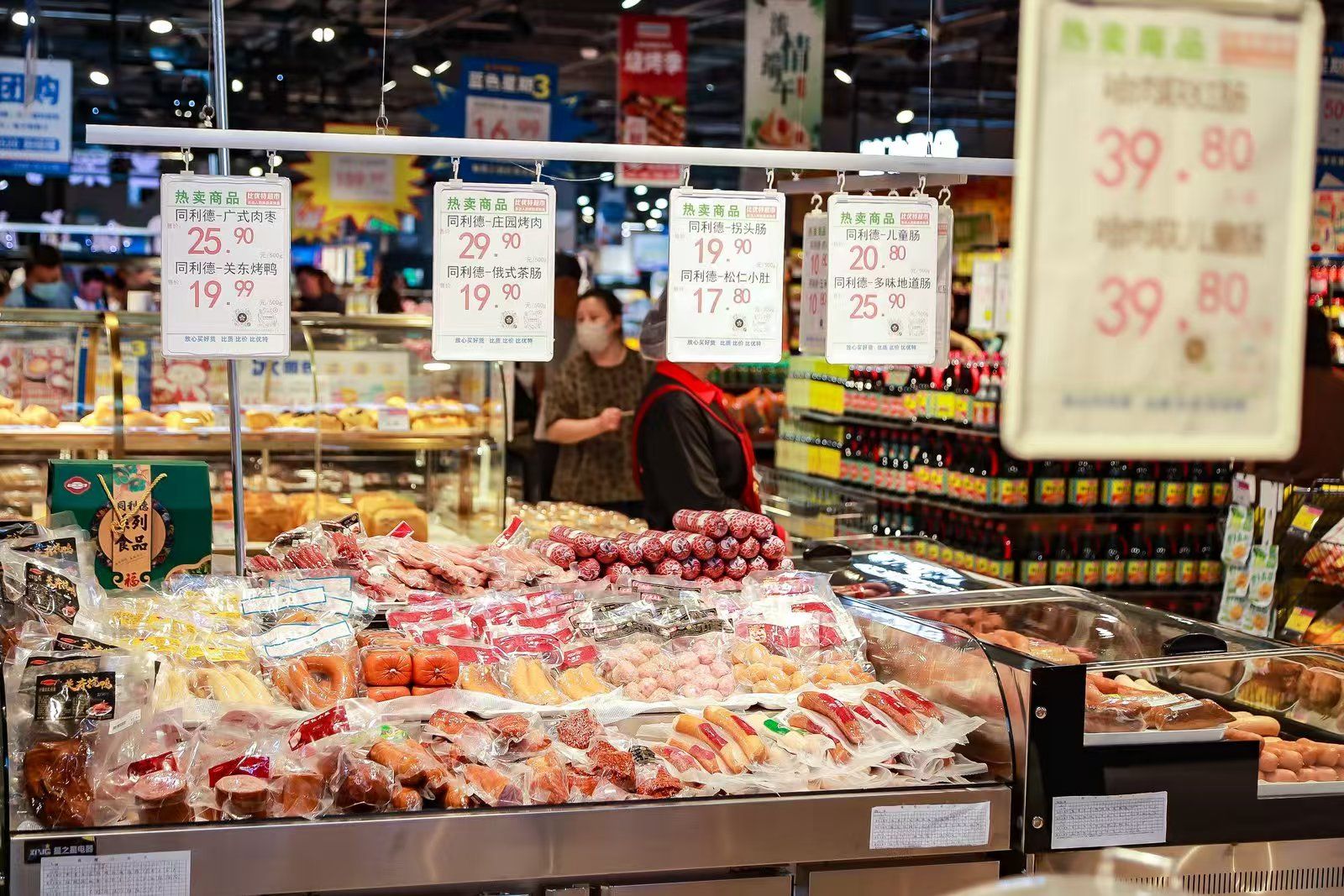In recent years, national supermarket chains across China have been struggling to survive in a sluggish market, while regional retailers—led by stores like Pangdonglai—have continued to thrive and expand, becoming navigators in the wave of retail transformation.
One representative example is Beauty Mart (比优特超市), a regional supermarket chain based in Northeast China. Founded in 1996, Beauty Mart recognized the looming crisis facing chain supermarkets as early as 2019 and proactively initiated internal restructuring and innovation—with remarkable results. Over the past two years, Beauty Mart has taken over former locations of Carrefour, Walmart, Yonghui, RT-Mart, and CR Vanguard, opening 37 new stores across the Northeast in one stretch. By 2025, it is expected to open more than 20 additional stores and surpass RMB 10 billion in revenue.
In a time when large chain supermarkets are facing a downturn, Beauty Mart’s counter-cyclical growth is particularly striking. Its success signals the emergence of a new buy-side solution.
On May 28, GenBridge Capital, together with several partner companies including New Joy Mart, Qiandama, and Harvest, visited Beauty Mart’s headquarters in Shenyang. They held discussions with Fanzhong Meng, Chairman of Beauty Mart and Zhenshimei Supply Chain, and Xu Zhou, co-founder and General Manager of Zhenshimei Supply Chain. The group also toured Beauty Mart’s regional distribution center and core stores.
Where does counter-cyclical growth come from?
What kind of supermarket is Beauty Mart? Before 2019, most consumers would have answered: good service, pleasant environment, and high-quality products. However, despite being a “three-good” supermarket, Beauty Mart experienced a six-month streak of losses that year.
In an internal survey, 95% of employees reported that they would not shop at their own supermarket, citing “unattractive prices” as the reason. After assessing the market, Beauty Mart discovered that the purchase prices for many of its products were even higher than the retail prices at local mom-and-pop stores.
To reverse the situation, Beauty Mart decisively adopted three key strategies:
- Across-the-board price cuts and a mass-market positioning
To regain consumer appeal, Beauty Mart benchmarked its prices against those of neighborhood stores and lowered prices on over 4,000 products. Hundreds of these items even had negative gross margins after the price adjustment.
This aggressive pricing strategy was designed to force a reduction in procurement costs. To that end, Beauty Mart transferred pricing authority from the procurement department to the product evaluation department and stopped accepting fees like “slotting fees,” “promotion fees,” and “invoice fees” as justifications for high supplier prices—common practices in large chain supermarkets.
During this reform, Beauty Mart gradually realized that chain supermarkets actually have scale advantages. Compared to small stores, they should be able to offer lower prices. However, the domestic retail industry had long accepted a deep distribution model led by brands—characterized by multiple, fragmented intermediaries—leading to scale without efficiency.
Therefore, to establish a genuine price advantage, the transformation had to start with supply chain reform—achieving total cost leadership through high efficiency. This insight laid the groundwork for Beauty Mart’s subsequent moves.
- Daily delivery system (“日日配”), warehouse elimination, and improved space efficiency
Beauty Mart’s “Daily Delivery” initiative is an innovative move to improve efficiency. Unlike traditional periodic bulk deliveries of single-category items, Beauty Mart’s model ensures that each store receives daily shipments of all product types it sold the day before—directly shelved upon arrival.
This system—daily delivery, full-category delivery, broken-bulk delivery, and sales-driven replenishment—ensures consistent product availability while reducing store-level inventory pressure and employee workload. Stores no longer need a warehouse; only a “transition zone” is needed, freeing up more space for shelves and customers.
This flexible, high-frequency delivery model also helps the supermarket dynamically adjust its product selection, swiftly replacing items that aren’t selling well. It ensures that every item on the shelf generates turnover and sales, instead of merely serving as shelf “advertising.”
As a result, Beauty Mart significantly improved sales per square meter. In one case, it took over a former Carrefour location and doubled the previous store’s sales using only half the original floor space.
- Building a regional central warehouse and launching the “Zhenshimei Supply Chain” supply chain
To achieve scaled low-cost procurement, acquiring brand distribution rights is essential. However, if the goods obtained can’t be sold quickly, inventory turnover slows. As Beauty Mart’s chairman Meng Fanzhong put it: “A sales channel can’t just be good at getting low prices—it must also turn goods over quickly and circulate efficiently.”
To address this, Beauty Mart built a central warehouse in Northeast China, receiving direct supply from over 400 brands. Based on cyclical sales volumes in different areas, the central warehouse dispatches goods to regional logistics centers, which then deliver to stores using the “daily delivery” model—small batches at high frequency.
This approach combines the benefits of scale in procurement with smart inventory management and replenishment pacing that is both scientific and controllable.

Building on this foundation, Beauty Mart further expanded its scale by proposing the concept of a “shared and co-built supply chain.” Together with more than 20 retail enterprises from Hebei and Shandong, it jointly invested in the establishment of Zhenshimei Supply Chain Management Co., Ltd. in Jinan. After brand manufacturers deliver their goods to Jinan, Zhenshimei takes over the downstream logistics and distributes the products directly to the logistics centers of retailers across Hebei, Shandong, and the northeastern provinces, based on their specific needs.
In other words, Zhenshimei essentially takes on the role of a distribution intermediary. However, its larger scale, centralized operations, and standardized capabilities make it far more efficient than the traditional fragmented, multi-tiered distribution systems.
In addition to this, Beauty Mart has launched a series of initiatives aimed at boosting operational efficiency, guided by the motto: “Extract value from every centimeter, seek efficiency in every second.” These include the use of AI-powered smart scales, a flexible hourly staffing system, a centralized monitoring and service center at headquarters, and performance optimization measures during the 20-minute windows before and after store opening.
In summary, Beauty Mart’s reform goal is to restore large supermarkets to their rightful efficiency and cost-leadership advantages that should come with a true chain model—returning to the fundamental value of “complete selection and low prices.”
Why has Beauty Mart succeeded?
The decline of large chain supermarkets is now widely acknowledged in the industry, and retail reform efforts are sweeping across the country. Yet, no major retailer has so far managed to fully reverse its downward trajectory through reform alone. So, why has Beauty Mart been able to quickly transform and achieve counter-cyclical growth?
The core reason lies in Beauty Mart’s unwavering focus on a single region—Northeast China—and its continuous efforts to densify its store network within that area, thereby achieving true scale advantages.
In the past, many national chain supermarkets pursued a scattered expansion strategy, opening just one or two stores in each city. Such a layout could not support a proprietary warehousing and logistics system. Although they appeared to be chains, in reality each store was operating in isolation, each with its own complex distribution network.
Beauty Mart’s chairman, Meng Fanzhong, refers to this model as “false chain retail”—superficially a chain, but fundamentally just a collection of independent stores. Despite having many outlets, per-store costs remain high, and scale efficiency is never realized.
In contrast, a “true chain model” requires regional focus and unified warehousing and distribution.
Beauty Mart has deeply cultivated the Northeast market over the long term, reaching 20–30 stores in a single city. In 2024 alone, it generated RMB 7.4 billion in sales from just the Heilongjiang and Liaoning provinces.

Such a concentrated regional scale advantage is the foundation for optimizing supplier relations and building a supply chain platform. Based on this, the “1+N model”—one regional warehouse and distribution center coordinating multiple stores—can truly achieve cost control and efficiency gains.
Without such a “true chain” system, simply focusing on front-end aspects like product displays or store operations cannot address the root problems.
This is why we are now seeing an increasing number of regional retail champions emerging. From Pangdonglai in Henan to Beauty Mart in the Northeast, and from Good Neighbor in Xiangyang, Xianfeng Life in Henan, to Chengshan Farm in Xi’an and Pengtai in Zhuhai, these outstanding regional retailers are becoming national case studies and models to learn from.
GenBridge view
The rise in chain-store penetration is an inevitable trend, but the winners may not necessarily be national chains. Regional leaders that deeply cultivate a single area—and thus improve their local chain-store penetration—may actually seize the emerging opportunities in this phase.
From a supply perspective, regional champions are more likely to achieve unified warehousing and distribution, increasing delivery frequency to reduce inventory levels and out-of-stock rates, thereby unlocking logistics scale advantages. They can also negotiate directly with local distributors or brand manufacturers, enabling direct supply from certain brands and shortening the supply chain.
From a demand perspective, retail is ultimately a localized business, particularly in the case of supermarkets, whose core categories (such as fresh produce) rely heavily on localized supply chains. Meeting the needs of local consumers requires the presence of strong regional retail leaders.
The essence of retail transformation is a process where high-efficiency business models gradually displace low-efficiency ones. As regional retailers continue to refine their buy-side strategies and improve operational efficiency, we may see an uptick in regional M&A activity, including consolidation among small and medium-sized players, or cross-regional and cross-format mergers led by high-performing retailers.
At Genbridge, we firmly believe: China’s retail sector still holds tremendous potential.



